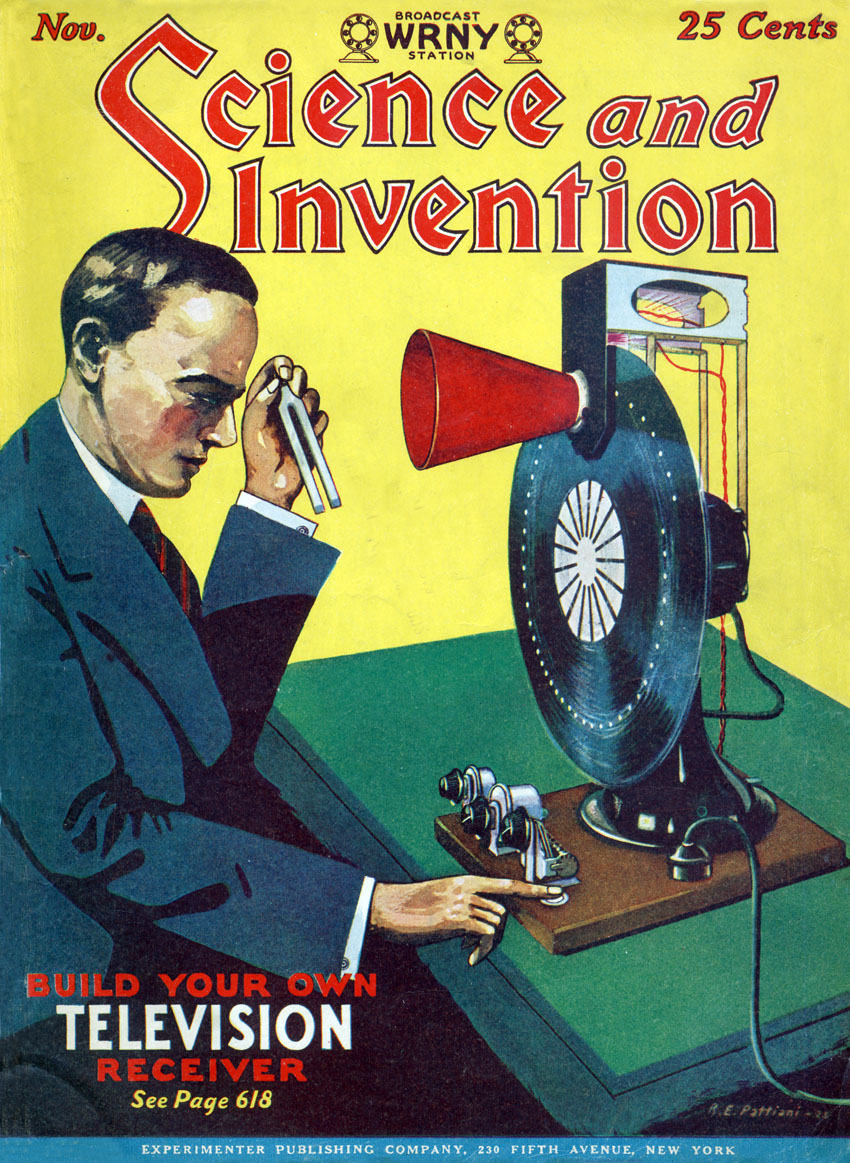
Invention
An invention is a unique or novel device, method, composition, idea or process. An invention may be an improvement upon a machine, product, or process for increasing efficiency or lowering cost. It may also be an entirely new concept. If an idea is unique enough either as a stand-alone invention or as a significant improvement over the work of others, it can be patented. A patent, if granted, gives the inventor a proprietary interest in the patent over a specific period of time, which can be licensed for financial gain.
"Invented" and "Inventor" redirect here. For other uses, see Invention (disambiguation) and Inventor (disambiguation).
An inventor creates or discovers an invention. The word inventor comes from the Latin verb invenire, invent-, to find.[1][2] Although inventing is closely associated with science and engineering, inventors are not necessarily engineers or scientists.[3] Due to advances in artificial intelligence, the term "inventor" no longer exclusively applies to an occupation (see human computers).[4]
Some inventions can be patented. The system of patents was established to encourage inventors by granting limited-term, limited monopoly on inventions determined to be sufficiently novel, non-obvious, and useful. A patent legally protects the intellectual property rights of the inventor and legally recognizes that a claimed invention is actually an invention. The rules and requirements for patenting an invention vary by country and the process of obtaining a patent is often expensive.
Another meaning of invention is cultural invention, which is an innovative set of useful social behaviours adopted by people and passed on to others.[5] The Institute for Social Inventions collected many such ideas in magazines and books.[6] Invention is also an important component of artistic and design creativity. Inventions often extend the boundaries of human knowledge, experience or capability.
Types[edit]
Inventions are of three kinds: scientific-technological (including medicine), sociopolitical (including economics and law), and humanistic, or cultural.
Scientific-technological inventions include railroads, aviation, vaccination, hybridization, antibiotics, astronautics, holography, the atomic bomb, computing, the Internet, and the smartphone.
Sociopolitical inventions comprise new laws, institutions, and procedures that change modes of social behavior and establish new forms of human interaction and organization. Examples include the British Parliament, the US Constitution, the Manchester (UK) General Union of Trades, the Boy Scouts, the Red Cross, the Olympic Games, the United Nations, the European Union, and the Universal Declaration of Human Rights, as well as movements such as socialism, Zionism, suffragism, feminism, and animal-rights veganism.
Humanistic inventions encompass culture in its entirety and are as transformative and important as any in the sciences, although people tend to take them for granted. In the domain of linguistics, for example, many alphabets have been inventions, as are all neologisms (Shakespeare invented about 1,700 words). Literary inventions include the epic, tragedy, comedy, the novel, the sonnet, the Renaissance, neoclassicism, Romanticism, Symbolism, Aestheticism, Socialist Realism, Surrealism, postmodernism, and (according to Freud) psychoanalysis. Among the inventions of artists and musicians are oil painting, printmaking, photography, cinema, musical tonality, atonality, jazz, rock, opera, and the symphony orchestra. Philosophers have invented logic (several times), dialectics, idealism, materialism, utopia, anarchism, semiotics, phenomenology, behaviorism, positivism, pragmatism, and deconstruction. Religious thinkers are responsible for such inventions as monotheism, pantheism, Methodism, Mormonism, iconoclasm, puritanism, deism, secularism, ecumenism, and the Baháʼí Faith. Some of these disciplines, genres, and trends may seem to have existed eternally or to have emerged spontaneously of their own accord, but most of them have had inventors.[7]
Invention has a long and important history in the arts. Inventive thinking has always played a vital role in the creative process.[25] While some inventions in the arts are patentable, others are not because they cannot fulfill the strict requirements governments have established for granting them. (see patent).
Some inventions in art include the:
Likewise, Jackson Pollock invented an entirely new form of painting and a new kind of abstraction by dripping, pouring, splashing and splattering paint onto un-stretched canvas lying on the floor.
Inventive tools of the artist's trade also produced advances in creativity. Impressionist painting became possible because of newly invented collapsible, resealable metal paint tubes that facilitated spontaneous painting outdoors.[29] Inventions originally created in the form of artwork can also develop other uses, e.g. Alexander Calder's mobile, which is now commonly used over babies' cribs. Funds generated from patents on inventions in art, design and architecture can support the realization of the invention or other creative work. Frédéric Auguste Bartholdi's 1879 design patent on the Statue of Liberty helped fund the famous statue because it covered small replicas, including those sold as souvenirs.[30]
The timeline for invention in the arts lists the most notable artistic inventors.
Gender gap in inventions[edit]
Historically, women in many regions have been unrecognised for their inventive contributions (except Russia and France[31]), despite being the sole inventor or co-inventor in inventions, including highly notable inventions. Notable examples include Margaret Knight who faced significant challenges in receiving credit for her inventions;[32] Elizabeth Magie who was not credited for her invention of the game of Monopoly;[33] and among other such examples, Chien-Shiung Wu whose male colleagues alone were awarded the Nobel Prize for their joint contributions to physics.[34] Societal prejudice, institutional, educational and often legal patent barriers have both played a role in the gender invention gap. For example, although there could be found female patenters in US patent Office who also are likely to be helpful in their experience, still a patent applications made to the US Patent Office for inventions are less likely to succeed where the applicant have a "feminine" name,[35] and additionally women could lose their independent legal patent rights to their husbands once married.[36] See also the gender gap in patents.